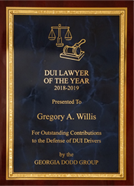In the aftermath of a hit-and-run accident in Georgia, victims often find themselves navigating a complex legal landscape. One of the most critical concepts to grasp in these situations is comparative negligence. This legal doctrine determines how fault is allocated when multiple parties contribute to an accident. Understanding how comparative negligence applies in Georgia hit-and-run cases is essential for victims seeking justice and fair compensation. By delving into the intricacies of this legal principle, victims can better comprehend their rights and the potential challenges they may face during the legal process.
The Basics of Comparative Negligence in Georgia
Georgia follows a modified comparative negligence rule, which is pivotal in determining the outcome of personal injury cases, including hit-and-run accidents. Under this rule, a plaintiff’s ability to recover damages is influenced by their degree of fault. In Georgia, a plaintiff can recover damages as long as their fault does not exceed 50 percent. If the plaintiff is found to be 51 percent or more at fault, they are barred from recovering any damages. This threshold underscores the importance of presenting a compelling case that minimizes the plaintiff’s percentage of fault while maximizing the fault attributed to the defendant.
Applying Comparative Negligence to Hit-and-Run Cases
Hit-and-run cases present unique challenges, particularly in identifying the at-fault driver. The absence of the responsible party can complicate the process of proving fault and pursuing compensation. However, comparative negligence still applies, even when the at-fault driver is unknown or unidentified. In these situations, the plaintiff must demonstrate that the hit-and-run driver was primarily responsible for the accident. Simultaneously, the plaintiff’s actions leading up to the accident will be scrutinized to assess their potential contribution to the incident.
He's the only lawyer in the State of Georgia to ever be recognized for all three of these accomplishments. Received the Samurai Lawyer Award for having gone to jail for a total of 4 days in order to save his own client Received the BadAss Lawyer Award for the biggest impact of all DUI lawyers in DUI defense in the country Received the vote of Georgia Lawyers as a Superlawyer in DUI Law for 10 straight consecutive yearsGreg Willis has been successful at defending DUI cases (over 93% without a conviction)
Proving Fault in Hit-and-Run Cases
Proving fault in a hit-and-run case requires meticulous investigation and gathering of evidence. Law enforcement plays a crucial role in identifying and apprehending the hit-and-run driver, but the plaintiff’s attorney must also engage in thorough fact-finding. This may involve obtaining surveillance footage, eyewitness testimonies, and accident reconstruction reports. The goal is to build a compelling narrative that clearly establishes the hit-and-run driver’s negligence as the primary cause of the accident. Additionally, the plaintiff’s attorney will work to mitigate any claims that the plaintiff’s actions contributed to the accident, thereby reducing their percentage of fault.
The Role of Insurance in Hit-and-Run Cases
In Georgia, uninsured motorist (UM) coverage can be a vital resource for hit-and-run victims. UM coverage is designed to provide compensation when the at-fault driver is uninsured, underinsured, or cannot be identified. Victims with UM coverage can file a claim with their own insurance company to seek compensation for medical expenses, property damage, and other losses. However, insurance companies often scrutinize these claims closely, and the principles of comparative negligence can still apply. The insurer may attempt to attribute a portion of the fault to the victim to reduce the payout. Therefore, having an attorney to negotiate with the insurance company and advocate for a fair settlement is essential.
Legal Challenges in Hit-and-Run Cases
Hit-and-run cases often involve complex legal challenges, particularly when it comes to establishing liability and navigating comparative negligence rules. The absence of the at-fault driver complicates the process, making it crucial for the victim’s attorney to employ creative and resourceful strategies. One significant challenge is the potential for the defendant’s identity to remain unknown. In such cases, the plaintiff must rely on their own insurance coverage, which can lead to contentious negotiations and potential disputes over fault and compensation. Additionally, hit-and-run cases may involve multiple parties, such as passengers or other drivers, further complicating the allocation of fault.
Mitigating Plaintiff’s Fault in Hit-and-Run Cases
To maximize the chances of a successful outcome, it is imperative to minimize the plaintiff’s perceived fault in a hit-and-run case. This involves presenting a clear and consistent narrative that highlights the defendant’s negligence while demonstrating that the plaintiff acted reasonably and prudently. The plaintiff’s attorney will gather and present evidence that supports this narrative, such as eyewitness statements, analyses, and accident reconstruction data. Additionally, the attorney may address any potential arguments the defense might raise regarding the plaintiff’s actions, countering these claims with factual evidence and persuasive arguments.
The Impact of Comparative Negligence on Compensation
The principle of comparative negligence directly impacts the amount of compensation a plaintiff can recover in a hit-and-run case. If the plaintiff is found to be partially at fault, their compensation will be reduced by their percentage of fault. For example, if a plaintiff is awarded $100,000 in damages but is found to be 20 percent at fault, their compensation will be reduced by 20 percent, resulting in a final award of $80,000. This reduction underscores the importance of minimizing the plaintiff’s fault and maximizing the fault attributed to the defendant. An experienced attorney will employ various strategies to achieve this, ensuring the plaintiff receives the highest possible compensation.
Related Videos
Choosing a Georgia DUI Attorney
Defenses and Strategies to Defend a DUI Charge
The Role of Witnesses and Evidence
Witnesses and evidence play a pivotal role in establishing fault and navigating comparative negligence in hit-and-run cases. Eyewitness testimonies can provide crucial insights into the events leading up to the accident, helping to corroborate the plaintiff’s version of events and establish the defendant’s negligence. Additionally, physical evidence such as vehicle damage, skid marks, and surveillance footage can be instrumental in reconstructing the accident and determining fault. The plaintiff’s attorney will meticulously gather, analyze, and present this evidence to build a compelling case that supports the plaintiff’s claims and mitigates their perceived fault.
The Importance of Legal Representation
Navigating the complexities of comparative negligence in hit-and-run cases requires the experience and guidance of a knowledgeable attorney. An experienced attorney will understand the nuances of Georgia’s comparative negligence laws and how they apply to hit-and-run cases. They will conduct a thorough investigation, gather and analyze evidence, negotiate with insurance companies, and advocate for the plaintiff’s rights in court if necessary. Having legal representation can make a significant difference in the outcome of a hit-and-run case, ensuring that the victim receives the compensation they deserve while minimizing their percentage of fault.
Protecting a Professional License After a DUI and Refusal of a Blood Test Result: DUI Dismissed with No Jail Time and No Loss of License Challenging Admissibility of a .19 BAC Blood Test and Field Sobriety Evaluation Result: No Jail Time, No DUI on Record, No License SuspensionFeatured Case Results
Steps to Take After a Hit-and-Run Accident
In the immediate aftermath of a hit-and-run accident, victims should take several crucial steps to protect their rights and strengthen their case. First, they should seek medical attention for any injuries sustained in the accident, even if they seem minor. Prompt medical evaluation and documentation are essential for establishing a clear link between the accident and the injuries. Second, victims should report the accident to law enforcement and provide as much information as possible about the hit-and-run driver and the circumstances of the accident. Third, victims should document the scene, including taking photographs, collecting contact information from any witnesses, and noting any relevant details.
Working with an Attorney
Engaging the services of an experienced attorney is one of the most critical steps a hit-and-run victim can take. An attorney will guide the victim through the legal process, helping them understand their rights and options. The attorney will handle communications with insurance companies, ensuring that the victim’s claim is presented effectively and fairly. Additionally, the attorney will work to identify and apprehend the hit-and-run driver if possible, using all available resources to pursue justice and compensation for the victim. Throughout the process, the attorney will provide support, advice, and advocacy, allowing the victim to focus on their recovery.
Seeking Justice and Compensation
Pursuing justice and compensation in a hit-and-run case involves a multifaceted approach that addresses both legal and practical challenges. The victim’s attorney will develop a comprehensive strategy that considers all aspects of the case, from gathering evidence to negotiating with insurance companies to representing the victim in court. The goal is to secure fair compensation for the victim’s injuries, property damage, and other losses while holding the negligent driver accountable for their actions. By understanding the principles of comparative negligence and working with an attorney, hit-and-run victims can navigate the complexities of the legal system and achieve a just outcome.
The Importance of Timely Action
Timely action is crucial in hit-and-run cases, as delays can hinder the investigation and weaken the victim’s case. Victims should seek legal representation as soon as possible after the accident to ensure that critical evidence is preserved and their rights are protected. Additionally, Georgia has a statute of limitations that sets a deadline for filing personal injury claims. Failing to file within this timeframe can result in the loss of the right to pursue compensation. An experienced attorney will ensure that all necessary steps are taken promptly and efficiently, safeguarding the victim’s legal interests.
Fighting for Hit-and-Run Victims
Navigating the complexities of comparative negligence in Georgia hit-and-run cases requires a deep understanding of the law and a strategic approach to building a strong case. By understanding how fault is determined and the impact of comparative negligence on compensation, victims can better advocate for their rights and seek justice. Engaging the services of an attorney is essential, as they will provide the guidance, and advocacy needed to navigate the legal process effectively. At Willis Law Firm, we are committed to helping hit-and-run victims pursue justice and secure the compensation they deserve. If you or a loved one has been involved in a hit-and-run accident, contact us today for a consultation and let us advocate for your rights and future.











